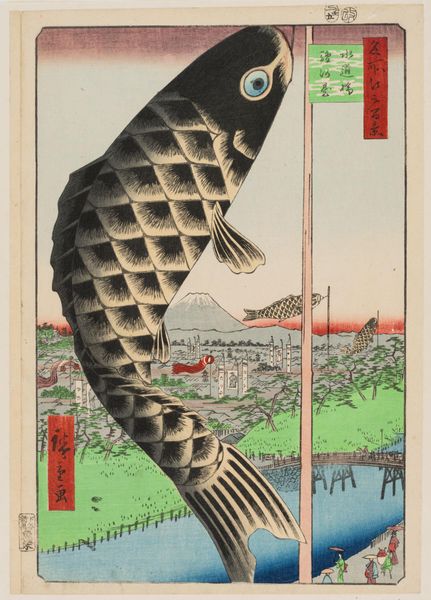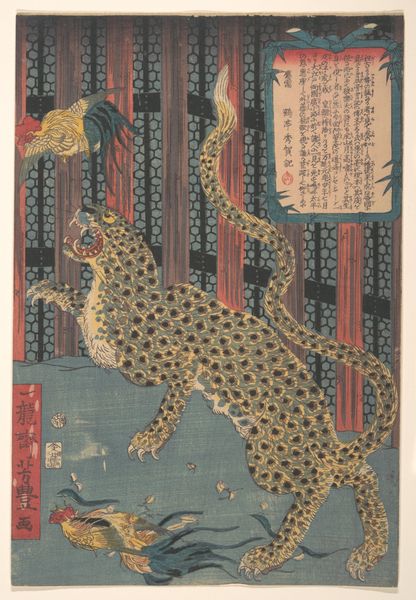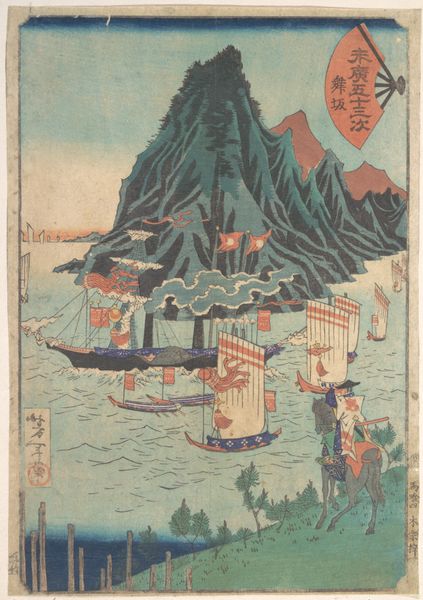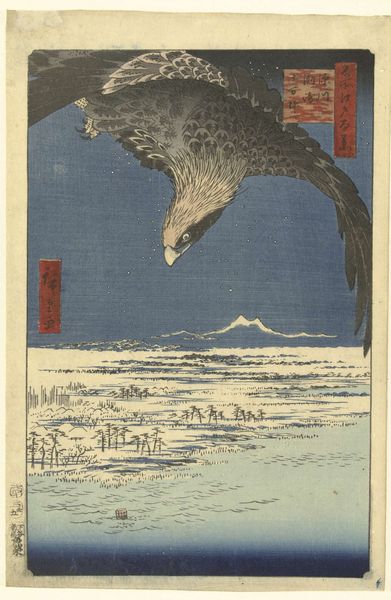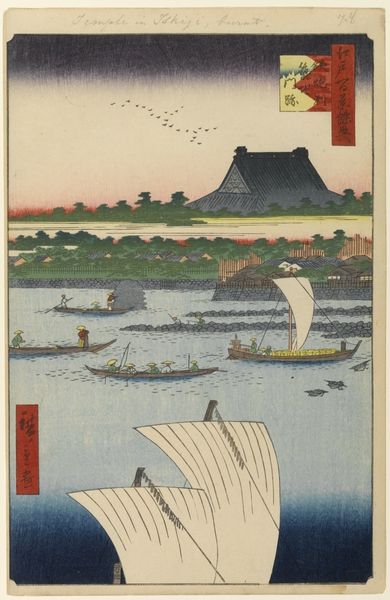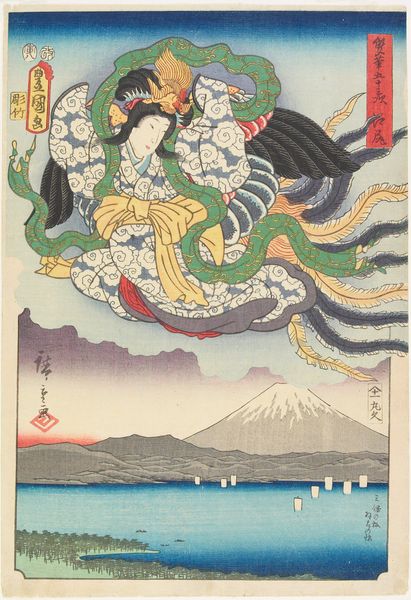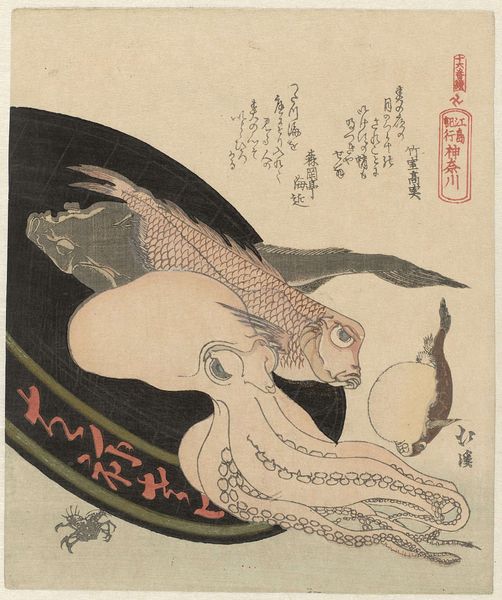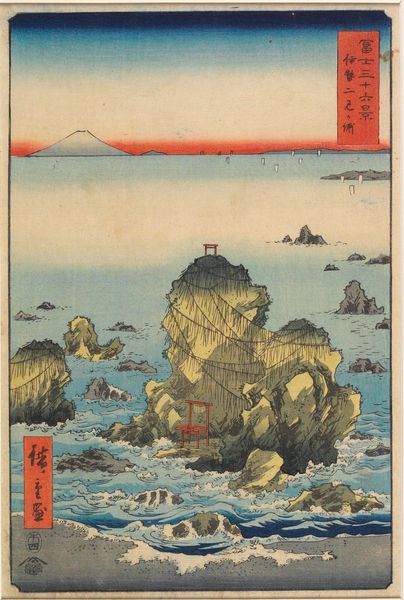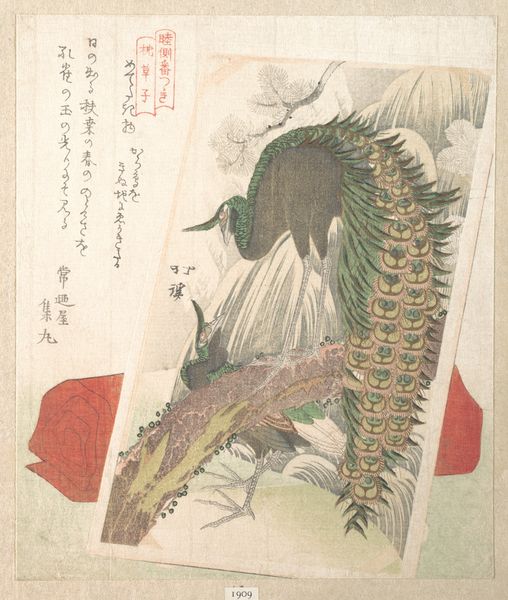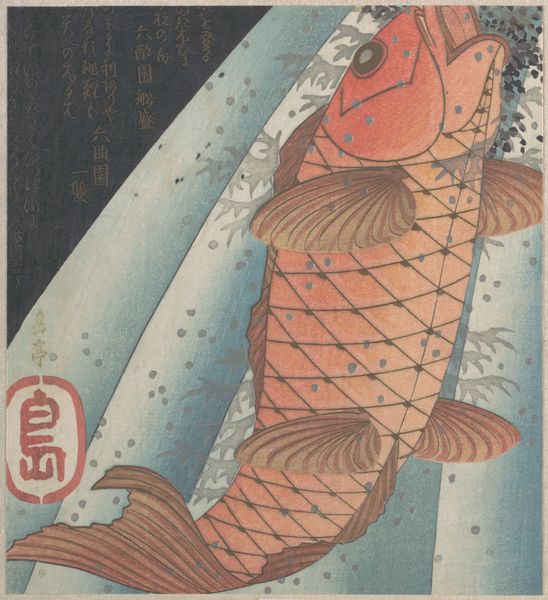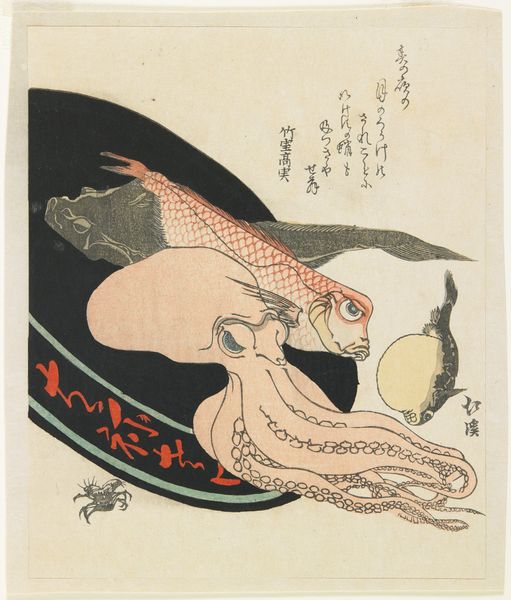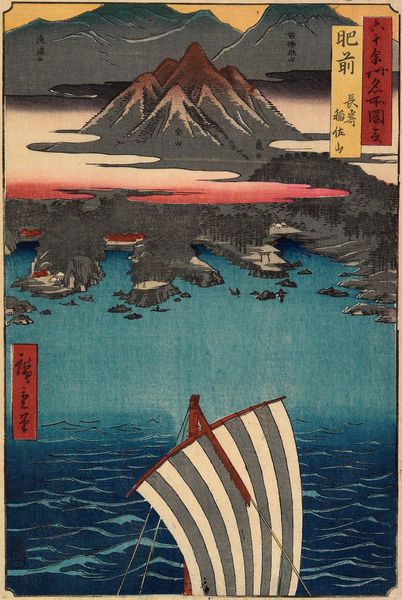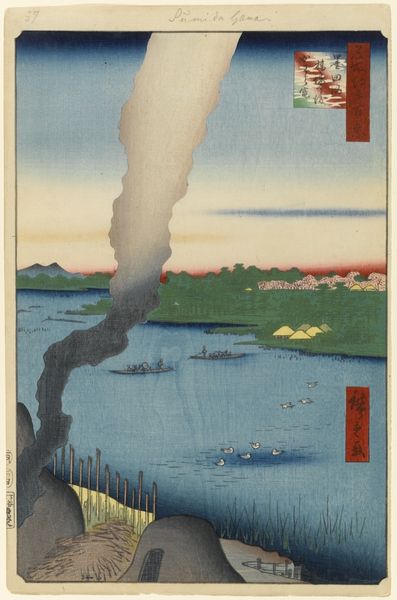
print, watercolor, woodblock-print
#
water colours
# print
#
asian-art
#
landscape
#
ukiyo-e
#
figuration
#
watercolor
#
coloured pencil
#
woodblock-print
#
line
#
cityscape
#
history-painting
Copyright: Public domain
Curator: Hiroshige’s “Suido Bridge and the Surugadai Quarter” created in 1857. It’s a woodblock print, showcasing a scene both intimate and expansive. What strikes you first about it? Editor: It's the sheer scale of the carp streamer! It dominates the composition, but its eye, almost comical in size, somehow welcomes you into the vista beyond. The fish seems to be inviting us on a visual journey. Curator: That "visual journey" speaks volumes. The carp, you see, is a potent symbol of courage and perseverance in Japanese culture, specifically associated with the Boys' Festival and celebrating children. Their strength of character becomes aligned to that of these huge fish swimming against the current. Editor: Ah, so the whole scene is, in effect, an optimistic image of aspiration framed within everyday life. Tell me more about this neighborhood that forms the backdrop? Curator: The Surugadai quarter was known for its samurai residences. The bridge itself, the Suido Bridge, suggests civic order. This wasn't just about aesthetic appeal, but showcasing a peaceful, well-governed society. The composition cleverly juxtaposes domestic hope for prosperity—those individual carp streamers—with the might of the state. Note how it sits peacefully in view of Mt. Fuji on the horizon, another incredibly important symbol in the nation's conscious. Editor: And these cityscapes, were they popular? Curator: Immensely! The ukiyo-e tradition brought images of daily life to a broader audience. Hiroshige was incredibly savvy at capturing the essence of Edo life in this moment. Editor: It makes me consider what it was like for the inhabitants of Edo period Tokyo. Did they feel connected with all those grand values when gazing upon it in that era, or simply see daily life faithfully presented to them in all its bustling energy and promise for good fortune? Curator: That’s the beauty of Hiroshige’s work: it functions on multiple levels. He gives us both an intimate glimpse into familial hope and the grand symbolic order of things. What resonates, shifts through time as people relate to symbols differently as meanings are culturally refreshed. Editor: I love that; art holding space for both personal feelings and these wider collective memories, these shifting identities that ripple outward like those winds carrying the carp through the sky. Curator: Indeed. The visual echoes between private ambition and the national ideal, captured with such serene grace. That's why we return to it again and again.
Comments
No comments
Be the first to comment and join the conversation on the ultimate creative platform.

